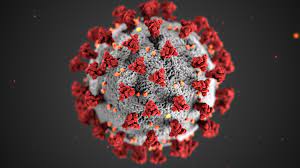St. Louis, Oct. 31 — A collaborative international team led by researchers at Washington University School of Medicine in St. Louis has made a breakthrough in understanding a rare genetic disorder that causes intellectual disabilities and brain malformations in children. Through advanced genetic analysis, they discovered that a mutation disrupting the cellular protein-folding process is responsible for the disorder. This research not only provided a molecular diagnosis for the affected family but also opened doors to diagnosing other cases with similar symptoms.
Approximately 30 million Americans suffer from rare diseases, often embarking on a “diagnostic odyssey” that can take years without yielding answers. This discovery marks a significant step in reducing that journey for some families, offering hope to patients and providers alike. The findings, published in Science, suggest potential therapeutic avenues for rare brain malformations in children.
“Many patients with severe, rare genetic diseases remain undiagnosed despite extensive medical evaluations,” said Dr. Stephen Pak, professor of pediatrics and co-corresponding author of the study. “This discovery provided clarity to the affected family, eliminating the need for further medical tests. It also led us to identify 22 other patients with similar neurological symptoms linked to protein-folding issues, paving the way for even more diagnoses and potential treatments.”
Dr. Pak explained that about 10% of patients with suspected genetic conditions carry a variant in a gene not yet associated with any known disease. Pak, along with Dr. Tim Schedl, professor of genetics, leveraged research on the roundworm C. elegans to explore the effects of these genetic mutations. Supported by the Eunice Kennedy Shriver National Institute of Child Health and Human Development, the team was able to connect these mutations with protein-folding disorders.
In this particular study, researchers examined a German boy with intellectual disabilities, low muscle tone, and brain structural abnormalities. Through genetic analysis, they identified a mutation in the CCT3 gene. This gene is essential in forming a protein-folding complex, which ensures other proteins fold into the correct shape for normal cellular function. In their experiments, C. elegans with the CCT3 mutation displayed impaired mobility, revealing the mutation’s impact on nervous system function.
“We knew the child had one functional and one mutated copy of the gene,” said Dr. Schedl. “In C. elegans, we observed that this mutation halved the protein-folding machinery’s capacity, proving insufficient for normal biological function in both worms and humans.”
The reduced protein-folding ability led to misfolded actin proteins—integral to maintaining cell shape and mobility—scattered throughout the cells of the affected roundworms. This suggests that the genetic mutation disrupts the essential protein-folding machinery, resulting in the observed neurological impairments.
Complementary studies conducted by RWTH Aachen University in Germany and Stanford University supported these findings, using zebrafish and yeast to highlight the mutation’s role in brain development and protein folding. By analyzing a global database of patients with intellectual and developmental disabilities, the team identified 22 individuals with similar mutations across seven CCT proteins. This led researchers to conclude that these patients represent a novel type of genetic disorder associated with protein-folding dysfunction.
“This study highlights the power of using simple model organisms to gain insights into complex human diseases,” said Dr. Gary Silverman, head of the Department of Pediatrics at Washington University. “Our work signals to clinicians and scientists worldwide that mutations in the protein-folding complex are disease-causing.”
Dr. Pak and his team are hopeful that this discovery will help families worldwide. “If, in the future, a child presents with similar symptoms, clinicians will have a reference to diagnose the disorder, ultimately reducing families’ diagnostic odysseys,” he said.
As researchers continue to explore the complexities of rare genetic disorders, this study represents a promising advancement in understanding the fundamental mechanisms behind neurological impairments and provides a foundation for future therapeutic developments.











